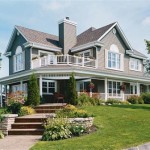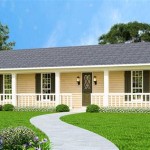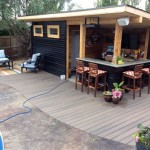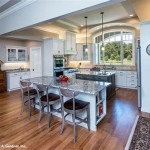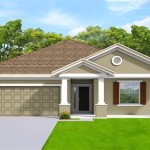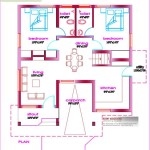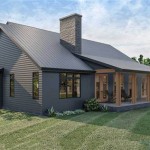Cape Cod Style House Plans: A Comprehensive Overview
Cape Cod style house plans represent a significant and enduring architectural tradition in American home design. Originating in 17th-century New England, these homes were initially practical structures designed to withstand the harsh coastal climate. Over time, the Cape Cod style has evolved while maintaining its core characteristics, becoming a symbol of both simplicity and charm. Understanding the key elements, variations, and suitability of Cape Cod house plans is essential for anyone considering this architectural style for their own home.
The appeal of Cape Cod homes lies in their understated elegance and functional design. These houses are typically one or one-and-a-half stories, providing a cozy and manageable living space. Their symmetrical facades, central chimneys, and shingle siding contribute to a visually appealing and timeless aesthetic. The adaptability of Cape Cod house plans also makes them a popular choice, as they can be customized to suit various lot sizes and personal preferences. This article will delve into the history, characteristics, variations, and considerations associated with Cape Cod style house plans.
The Historical Context of Cape Cod Architecture
The Cape Cod style emerged from the necessity of early settlers in New England to construct durable and practical homes. Inspired by English building traditions, early Cape Cod homes were adapted to the local climate and available materials. The original Cape Cod houses were simple, rectangular structures designed to maximize space and minimize exposure to the elements. These homes typically featured a central chimney, providing efficient heating and ventilation. The low roofline and minimal overhangs helped to shed snow and withstand strong winds. Shingle siding, commonly made from cedar, provided excellent weather protection.
Over time, the Cape Cod style evolved, with variations emerging to accommodate growing families and changing lifestyles. The addition of dormers allowed for more usable space in the upper half-story, transforming attics into functional living areas. Attached garages and expanded living spaces became common features, while maintaining the core characteristics of the original Cape Cod design. This evolution has allowed the Cape Cod style to remain relevant and adaptable to modern living needs, without sacrificing its inherent charm and historical significance. The style reflects the ingenuity of early American settlers and their ability to create functional and aesthetically pleasing homes in challenging environments.
The enduring popularity of Cape Cod architecture is a testament to its practicality and aesthetic appeal. While modern materials and construction techniques have refined the building process, the fundamental principles of Cape Cod design remain influential. The emphasis on simplicity, functionality, and durability continues to resonate with homeowners seeking a comfortable and timeless living space. The historical context of Cape Cod architecture provides valuable insights into the design principles and cultural values that shaped this iconic style.
Key Characteristics of Cape Cod House Plans
Several defining features distinguish Cape Cod house plans from other architectural styles. Symmetry is a crucial element, with a centrally located front door flanked by equally spaced windows. This symmetrical facade creates a balanced and harmonious appearance. The presence of a large, central chimney is another hallmark of Cape Cod architecture, reflecting the importance of heating in the cold New England climate. Chimney placement also influenced the interior layout, with rooms often arranged around the central fireplace.
The roofline is another key characteristic, typically featuring a low pitch and minimal overhangs. This design helps to shed snow and reduce wind resistance, making the homes more resilient in harsh weather conditions. Shingle siding, traditionally made from cedar, is a common exterior material, providing both weather protection and a distinctive aesthetic. The use of natural materials, such as wood shingles and clapboard, contributes to the overall charm and character of Cape Cod homes. These shingles weather naturally over time, creating a soft, textured appearance that blends seamlessly with the surrounding landscape.
Windows are also an important element of Cape Cod design. Traditionally, double-hung windows with multiple panes are used, adding to the classic look of the homes. Shutters, often painted in contrasting colors, are a common feature, providing both aesthetic appeal and functional protection. The interior layouts of Cape Cod homes are typically simple and functional, with rooms arranged around the central fireplace. The emphasis is on creating a comfortable and practical living space, with ample storage and efficient use of space. The combination of these characteristics creates a distinctive and timeless architectural style that continues to be admired and emulated.
Variations of Cape Cod House Plans
While the basic Cape Cod style is characterized by its simplicity and symmetry, several variations have emerged over time to accommodate different needs and preferences. The "Full Cape" is the original and simplest form, featuring a central front door, two windows on each side, and a central chimney. This design maximizes interior space and minimizes exterior exposure. The "Half Cape" is a smaller version, with the front door located to one side and only two windows on one side of the door. This variation is often used for smaller homes or additions to existing structures.
The "Three-Quarter Cape" is another variation, featuring a central front door with two windows on one side and one window on the other. This design provides a slightly asymmetrical appearance while maintaining the overall Cape Cod aesthetic. The "Double Cape," also known as a "Four-Square Cape," is a larger version of the Full Cape, with a wider facade and more windows. This variation is often used for larger families or those seeking more living space.
In addition to these basic variations, modern Cape Cod house plans often incorporate contemporary features and amenities. Dormers are a common addition, providing more usable space in the upper half-story and allowing for larger windows. Attached garages, expanded living spaces, and updated kitchens and bathrooms are also common features. These modern adaptations allow homeowners to enjoy the classic charm of a Cape Cod home while incorporating modern conveniences and design elements. The adaptability of Cape Cod house plans ensures that this architectural style remains relevant and appealing to a wide range of homeowners.
Considerations When Choosing a Cape Cod House Plan
Choosing a Cape Cod style house plan involves careful consideration of several factors, including lot size, budget, lifestyle, and personal preferences. The symmetrical design of Cape Cod homes typically requires a rectangular or square lot. The low roofline and minimal overhangs may not be suitable for areas with heavy snowfall or intense sun exposure. Careful planning is essential to ensure that the house plan complements the surrounding landscape and meets the homeowner's specific needs.
Budget is another important consideration. While Cape Cod homes are generally considered to be relatively affordable to build, the cost can vary depending on the size, materials, and level of customization. Choosing durable and low-maintenance materials, such as cedar shingles and energy-efficient windows, can help to reduce long-term costs. Working with an experienced architect or builder can also help to ensure that the project stays on budget and meets all building codes and regulations.
Lifestyle is also a key factor to consider. Cape Cod homes are typically well-suited for small families or individuals seeking a cozy and manageable living space. The simple and functional layouts make them easy to maintain and ideal for those who value practicality and efficiency. However, the relatively small size of traditional Cape Cod homes may not be suitable for larger families or those who require more space for entertaining or hobbies. Considering these factors will enhance satisfaction with this historically significant architectural style.
Finally, personal preferences play a significant role in the selection of a Cape Cod house plan. Homeowners should consider their individual tastes and needs when choosing the specific features and finishes of their home. The adaptability of Cape Cod house plans allows for a wide range of customization options, from the exterior siding and roofing to the interior layout and finishes. By carefully considering these factors, homeowners can create a Cape Cod home that is both beautiful and functional, reflecting their unique style and personality.

Cape Cod House Plans With Gabled Dormers

Miscellaneous Houses Ilration And Floor Plans Of A Cape Cod Style House Published In The Star Library Congress

House Plan 86345 Southern Style With 1824 Sq Ft 3 Bed 2 Bath

Classic And Cool Cape Cod House Plans We Love Houseplans Blog Com

Cape Cod Style House Plan 8312 Huntington

Plan 057h 0016 The House

Charming Country Farmhouse Style House Plan 1985 Summerfield

Cape Cod House Plans Cottage Style
Cape Cod Home Designs Spotlight Frank Betz Associates

Ham Cape Cods Modular Home Floor Plan The Plans House

